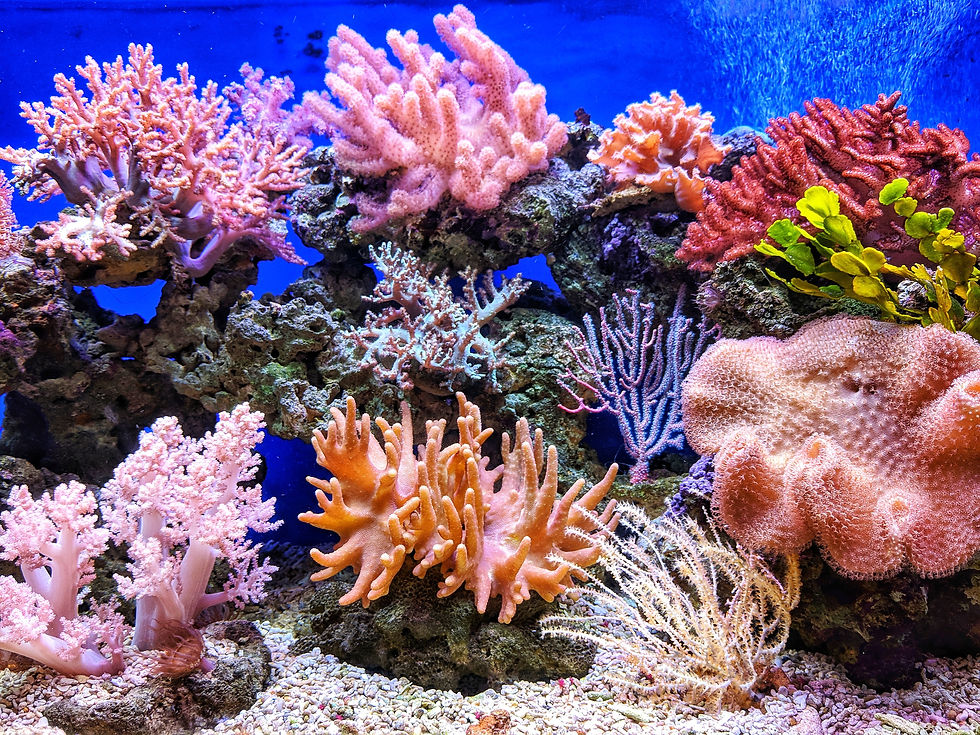How ‘Forever’ Can Be Destructive
- Anna-Maria Hartley

- Jun 23, 2021
- 3 min read
Updated: Aug 16, 2021
How does fashion impact our oceans? If we were to take five minutes to research ‘plastic’ we would face a variety of information. Ranging from positive and negative stories, these few minutes can educate us on how we are affecting the oceans.
With documentaries, news articles, and publications providing us different viewpoints of it. Through just five minutes, we can see the dangers it can pose to our environment.
From affecting marine life to covering beaches with trash, plastic has increasingly been mass-produced for our use. Creating a cycle of pollution that seems never-ending, forever can be destructive until we start to do something about it.
Netflix documentaries
Netflix released ‘Seaspiracy‘ which went viral, focusing on the dangers of fishing and how our oceans are in real danger. However, we seem to have become slightly ‘mindless’ when watching these kinds of films.
Ali Tabrizi is a young British director who directed this documentary, as well as the movie ‘Vegan’ in 2018, and co-created ‘Cowspiracy’ 2014. Although aiming to investigate the harm we do to marine species in our oceans around the world, Tabrizi’s viewpoint can be considered one-sided because he is vegan.
These encourage people to stop eating animals to solve problems such as ocean pollution, marine life decline, and climate change. However, downplays the effects the mass production of plastic for fashion, household items, and everyday uses has on our environment.
The ‘need’ for plastic
Plastic has been an integral part of our lives, from packaging almost everything we have in our homes, offices, and schools to producing mechanical objects and clothing. It has revolutionised how our society handles and delivers items around the globe.
However, since the mass production began, only about 5% of the value of plastic packaging stays in the economy – the rest is literally dumped, showing the need for an approach focussed more on recycling and reusing materials. Although this is not claiming to say we are killing our ocean by the second, it aims to inform readers on how we all play a part in this movement. This may be altering our habits in order to make even the slightest change.
Plastic and our oceans
But how do fashion and our ocean come into this? The fashion industry is actually a major contributor to microplastic pollution within our oceans. These particles are accumulating within marine habitats around the world, representing a new type of environmental and health threat.
As plastic is designed to last forever, when it’s used for single-use products including packaging and designing clothing, shoes, handbags, etc. a cycle of unnecessary waste pollution is fuelled. Ending up in our oceans, solely for that one single use. As well as this, many of our clothes are made from synthetic fibres (plastic). These release significant amounts of greenhouse gases. This is dangerous as it has environmental and health-related effects, being the main cause of climate change through trapping heat.
Becoming aware
Do you know that around 700,000 microfibres are released in every wash cycle? These microfibres enter our sewage system and many are too small to be collected by the wastewater treatment plants. When microfibres are captured, they are frequently used as a fertiliser on fields that enter waterways to the sea. Over a third (35%) of all microplastics released into the world’s oceans come from synthetic textiles.
These statistics question why the focus was put on plastic straws rather than the fashion industry in past years?
How can we help?
Educate others on what materials are in your cupboards. Consider switching from synthetics to natural or cellulosic fibres.
Wash our clothes less frequently to reduce microfibre shedding.
Buy from sustainable fashion industries, encourage ones you shop at to become sustainable, creating products with longevity and quality.
Upcycle clothing we own, rather than jumping on every new trend and buying more clothes. We can use the ones we already have and alter them.
Despite watching countless Netflix documentaries and listening to podcasts, taking five minutes to research fashion and our oceans can change the way we think, buy, and use our items.
Raising this awareness and protecting our oceans is important to make sure we protect marine life. Through building a more sustainable fashion industry, we can avoid the destructive impact it has had on our planet.
Creating change with something as little as one less wash at a time.



Comments